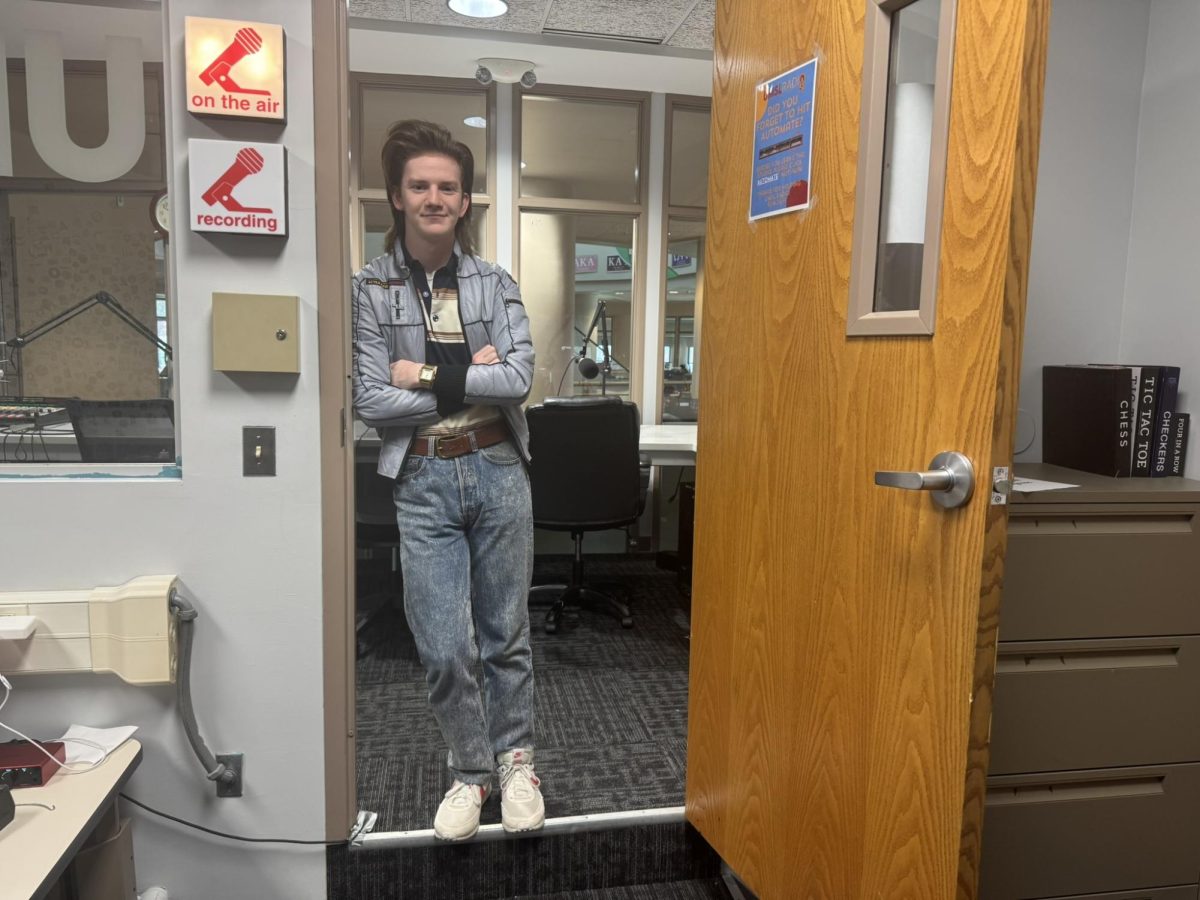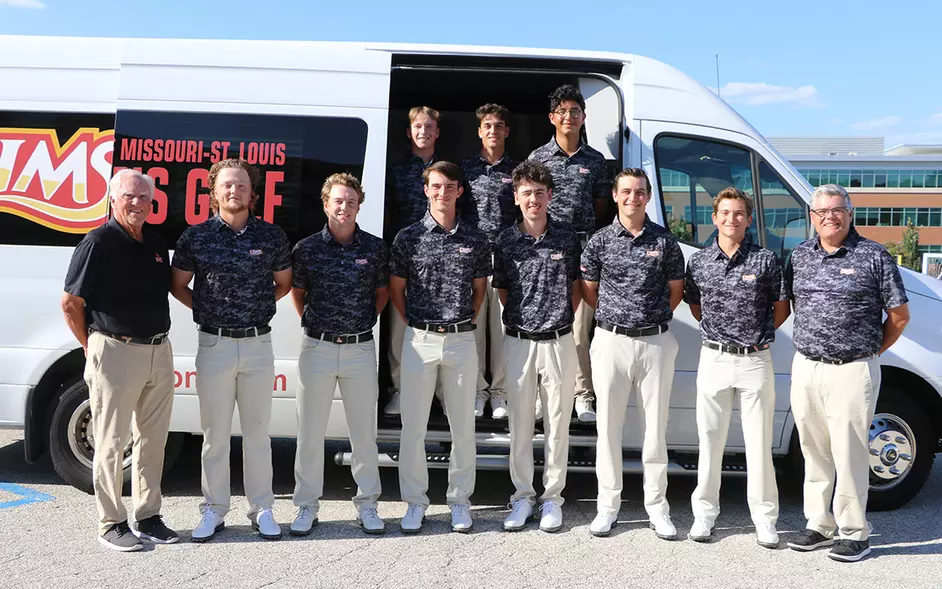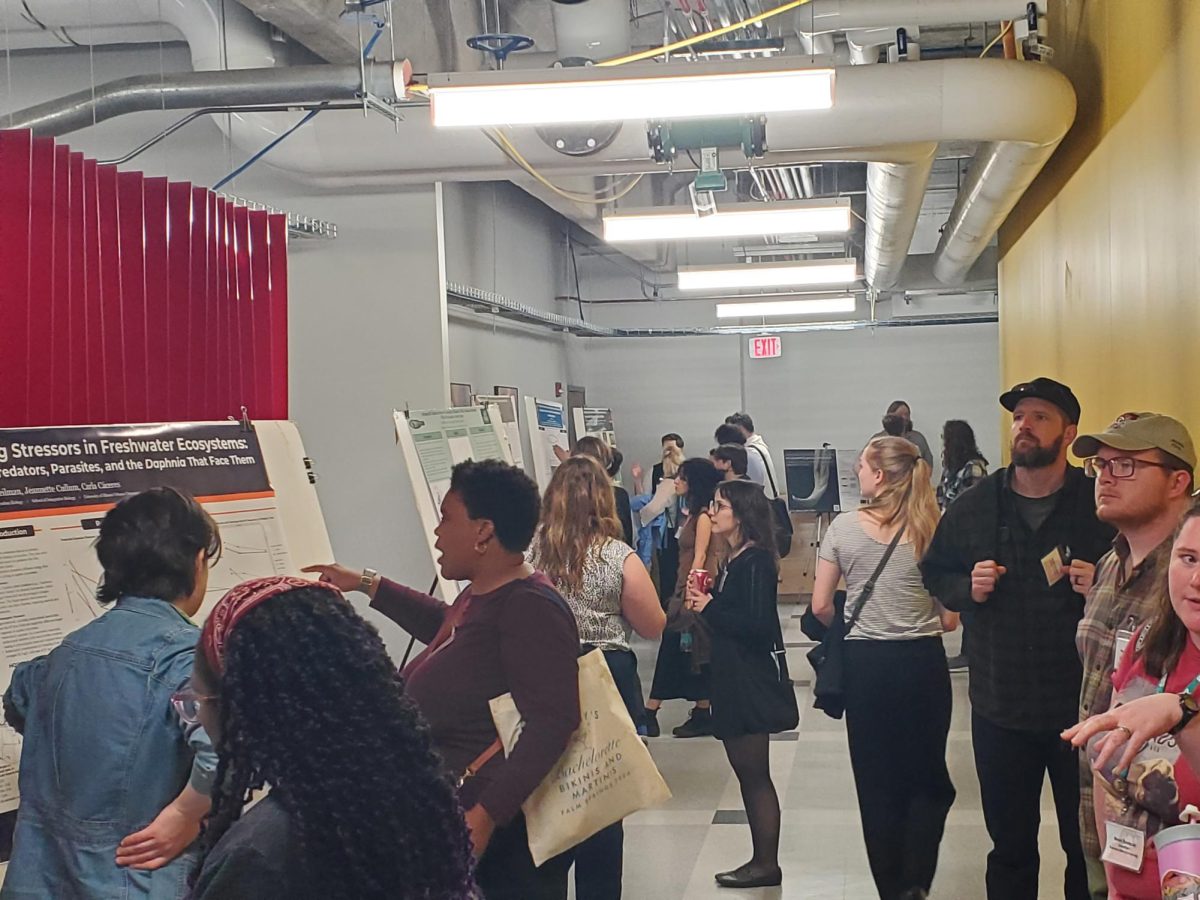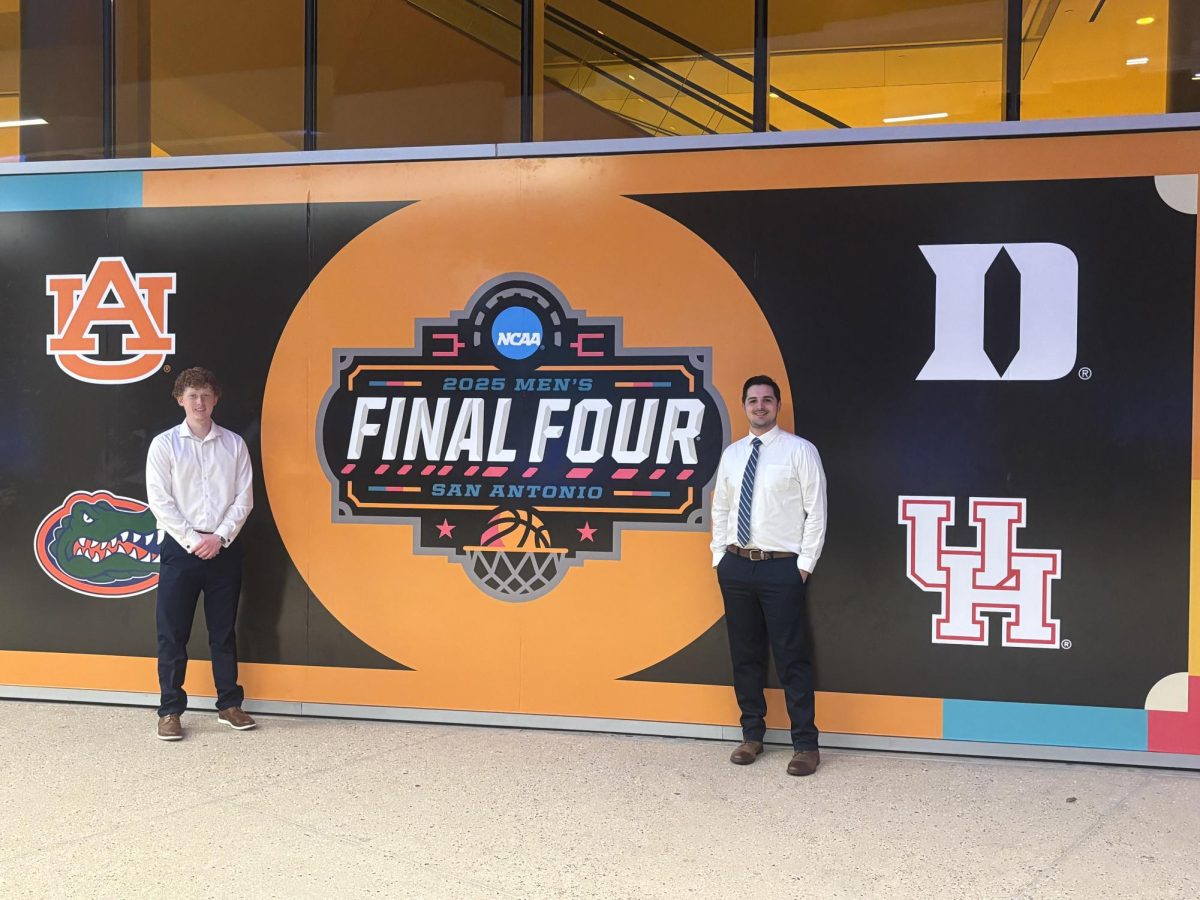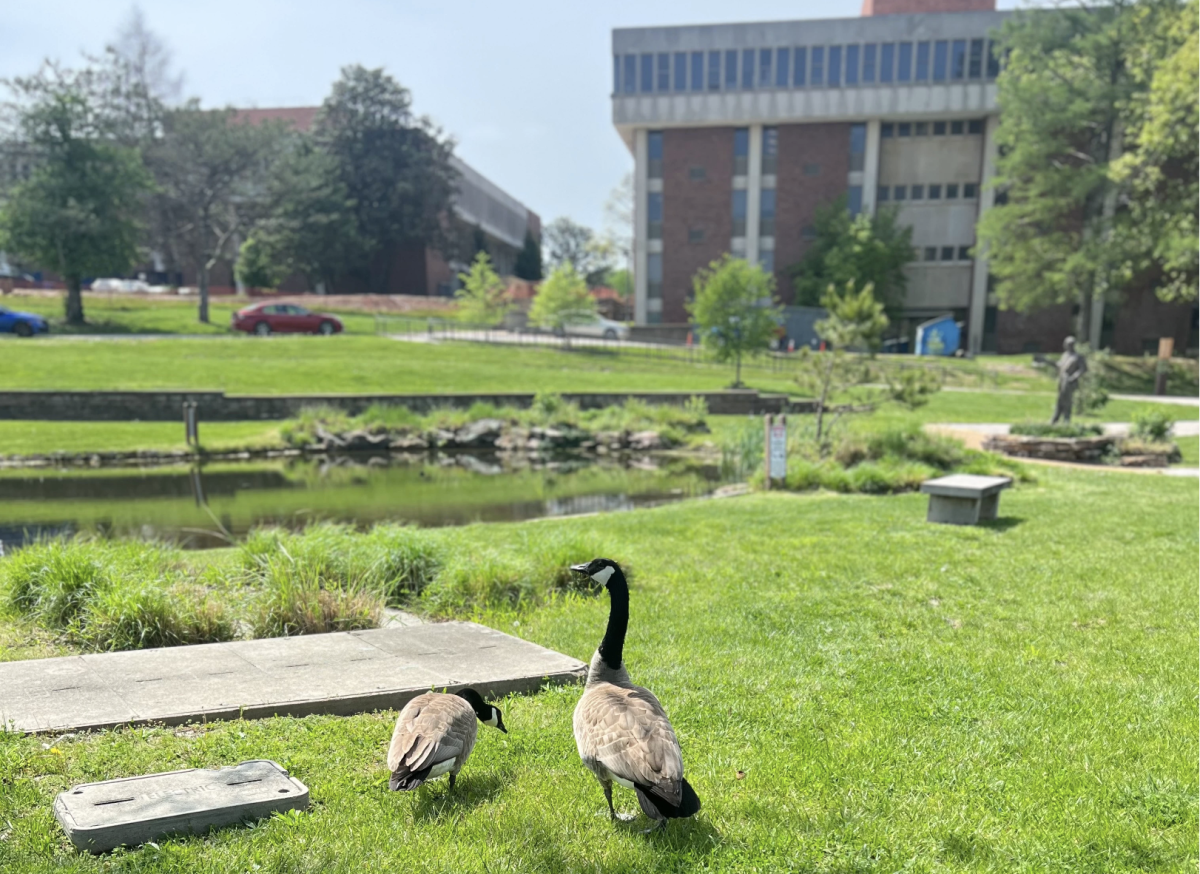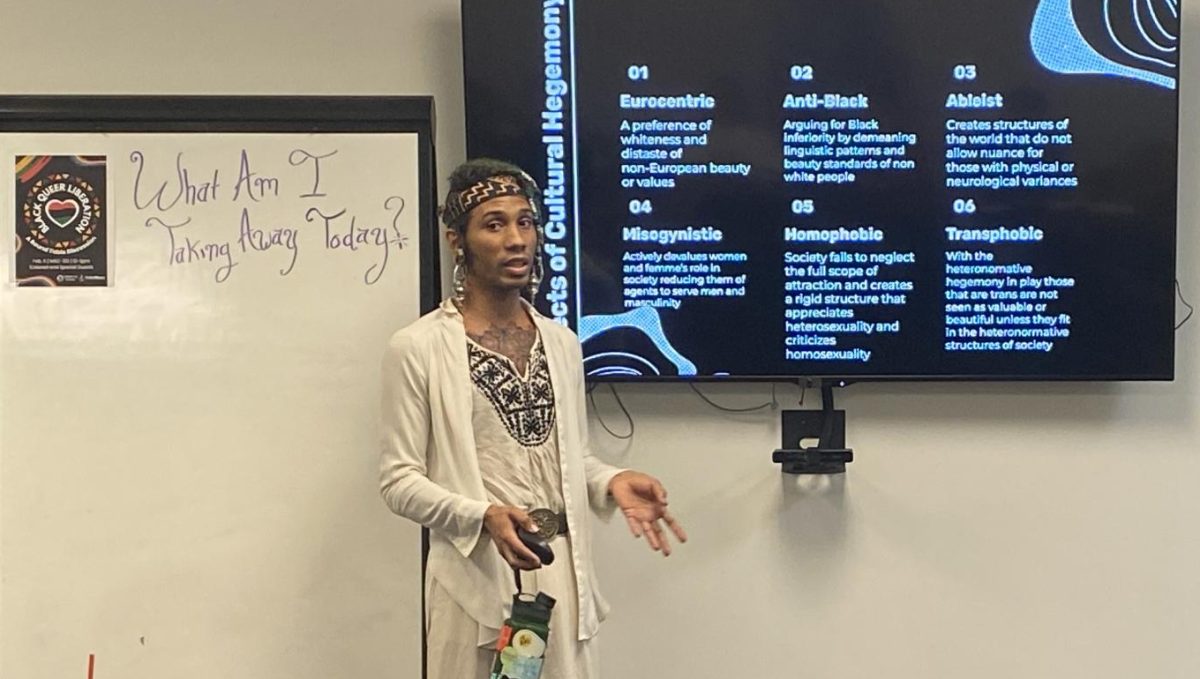Students have seen them, they’ve heard them and they might have even gotten into a slight altercation with them. Yes, it is the geese of UMSL. They have roamed campus for as long as many can remember, harassing students, but also serving as a vital part of the UMSL experience.
“I really love them. They’re sassy queens,” says Hannah Reichert, a senior at UMSL.
More formally known as the Canada Goose (Branta canadensis), this subspecies of goose is part of the Anatidae family consisting of various birds, swans and ducks. These geese are distinguishable by their bold black head and necks, white cheeks and a large brownish-gray body. They can range from 4.4 to a whopping 14.3 pounds and have an enormous wingspan that spreads almost six feet long.
As these feathered friends are making their way back from migration as the Spring season fully sets in, students are also preparing for the wrath of their not-so-welcoming moods.
“I can’t stand them… They attack you, they bite and they poop everywhere,” says student Anthony Burrows.
Assistant Teaching Professor Meghann Humphries’ history with Canada Geese goes as far back as her childhood. “My first job that I ever had was when I was 13 years old, I was working at a dog kennel that had nesting geese. Part of my duties were to check the nests and I was attacked by one. Since then I have always admired them because of their big “V” formation as a sign of migration,” she says.
While Humphries has had interesting encounters with the Canada Goose, her interest in ornithology prevented her from keeping them out of her studies.
With a bachelor’s and master’s in biology from Southeast Missouri State, Humphries pursued bird studies for her interest in conservation and received her Ph.D at UMSL. Humphries has been teaching at UMSL since 2019 and currently teaches intro biology (evolution and ecology), comparative vertebrate anatomy, conservation biology, ornithology, global climate change, and environmental biology, all while managing the undergraduate and graduate conservation certificates and environmental studies minor.
On the topic of temperament, geese are strategically defensive. “Generally speaking, a goose will not attack you if it does not have a nest or babies,” says Humphries. “They would rather avoid you at those times, but when they have a nest or babies, they are very aggressive. They will attack, and they can knock you down and rough you up a bit,” she says. “Back away, look big, and look it in the eyes,” she advises if one does try to attack you.
Typically, the males are the ones who are doing the attacking. “If a breeding pair has a nest, the female is going to be on those eggs, and the male will defend her. Once those eggs hatch, either one of them will go for you,” Humpries explains.
With UMSL’s various open grassy areas and ponds, geese often lay their eggs nearby, this creates the perfect concoction for them to scare away any passersby. However, their sharp intuition and hostility aren’t the only interesting things about the Canada Goose. A lot of times, geese on campuses rarely migrate because they have all the resources they need where they are.
Humphries explains “They’re seed eaters… they want to be on the ground. They’re generally in the grass or on the ground. They fly well, but they don’t roost up high. They are one of the species where the Northern population still migrates to the South. But, we are right on the cusp of year-round residents versus migrants. So, most of the geese here are only shifting minorly and don’t go very far. These campus geese, stay right here. The same goes for golf course geese…if there’s a good food source and the winter’s not too harsh, they’ll stay put.”
But while many of these fascinating creatures remain permanent residents of UMSL’s rent-free campus, there has been quite an eye out for one specific goose. Back in 2017, nicknamed Adelaide, a former goose mother was heavily monitored and preserved just outside of the Thomas Jefferson Library with their installation of a “goose cam.” While she kept her goslings warm, her partner, Dewey, defended his family with his life.
However, a particular goose fanatic has an even deeper connection to UMSL’s beloved residents. Garry Guinn, the owner and creator of Humane Wildlife Solutions LLC manages the population control of the Canada Geese on campus. Concerning geese, Guinn remains a supporter of keeping the geese alive and well on campus. “I started this [company] in 2016…It’s not about the animal, it’s about the issue,” says Guinn.
When discussing their temperament, Guinn comes to the geese’s defense. “These are not animals trying to harm us. They’re not aggressive, they’re protective. They’re really good parents,” says Guinn.
Since Guinn works so closely with the Canada Geese, he’s been able to recognize the patterns of the resident birds. “Mom chooses the nest site. She knows exactly where she wants to go…At UMSL, I know exactly what dates they are going to nest because they come back every single year at the same time,” he says.
Guinn has been working on UMSL’s campus since 2017, he explains how the presence of geese has significantly declined since. He explains “When we tend these eggs, the goal is to naturally bring this population down so there are not huge spikes. At UMSL, it was known as the “Goose campus.” It was no surprise if there were 100 or more geese on that campus [UMSL].” Guinn explains how as opposed to 20-40 nests, there are around 9 nests on campus today.
Even with fewer geese on campus today, there is no doubt that they don’t go unnoticed as students head to their classes. Guinn explains that their prevalence on campus and in Missouri is due to our location “Since we are on the Mississippi flyway, there is no doubt that there are a lot of migratory geese that come here.”
Though their population has significantly decreased, Guinn clarifies that there are some benefits to reducing the population. Regarding goose fecal matter, the possibility for geese to carry infectious diseases in their waste is high. “It [keeping sidewalks clear] helps reduce the potential for salmonella. Many birds and lizards naturally have salmonella in their body… It helps them excrete waste,” says Guinn.
Though many UMSL affiliates stay clear of any sign of geese (even when they sit right in front of Clark Hall’s entrance) due to their infamy on campus, many still feel that UMSL would not be the same without their presence.
While many UMSL affiliates may resent geese for their defensiveness, it is crucial to consider why these geese are the way they are. As Guinn and Humphries explain, the bold and brave attitude of geese derives from the need to protect their young, and that is to be respected.
“I know that they can be obnoxious and aggressive during nesting season, and I know that their population can cause damage to the landscape, but I still just have a fondness for them… I like their attitude,” says Humphries.
It is also worth it to note why the geese are here, to begin with. UMSL and many other campuses create the most suitable lifestyle for geese and many other animals. Is it truly fair for students to grow frustrated with geese when humans are the ones who attract them to campus? “It’s not about the goose. It’s about the resources available. We create these perfect habitats for them then wave our fingers when they show up… it’s kind of ironic, isn’t it?” claims Guinn.
As the semester comes to an end and we see more geese and hear more honks (and occasional hissing), it is important to remember just how meaningful geese are to UMSL’s campus.
“I have a huge amount of respect for animals,” says Guinn. “Clearly, the geese got me started down this path, but we need to realize that these are individuals… We need to have more love for ourselves, each other and the environment… We have to learn to live better with them because we are a piece of the puzzle.”






